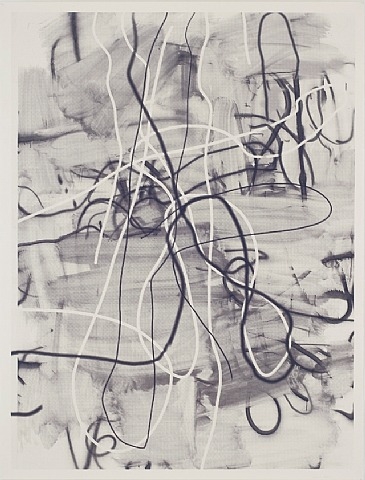Wool’s first exhibition was held in 1984 at Clarissa Dalrymple and Nicole Klagsbrun's Cable Gallery. Also in 1984 he produced first book – a photocopied edition of four: 93 Drawings of Beer on the Wall. Two years later, Wool started producing his first pattern paintings, and in 1987 he joins the Luhring Augustine Gallery. 1987 saw Wool’s first ‘word paintings.'
In 1988 he had his first European shows in Cologne and Athens. The following year in 1989 he exhibited at Museum Group shows in Amsterdam, Frankfurt am Main, and Munich, as well at the Whitney Biennial. In the same year he took a one-year fellowship at the American Academy in Rome. 1989 also saw the publication of Black Book, an oversized collection of 9-letter images, and the first retrospective of his work mounted at Boymans-Van Beuningen Museum in Rotterdam. His book Cats in Bag Bags in River was published to coincide with the show. In 1992 Wool undertook a DAAD residency in Berlin. Absent Without Leave was published in 1993: 160 black-and-white images from travel photographs taken over the previous 4 years. In 1998 the Museum of Contemporary Art Los Angeles mounted a mid-career retrospective of Wool’s work. Christopher Wool lives and works in New York and Marfa, Texas.
I'm afraid I don't have dates for many of Wool's artworks shown here, so they won't be in strict chronological order.
 |
| 1990 Trouble enamel on aluminium |
 |
| 1991 Untitled alkyd on aluminium |
 |
| 1995 Untitled enamel on aluminium |
 |
| 1996 Untitled enamel on aluminium |
 |
| 2000 Untitled alkyd and silkscreen on rice paper |
 |
| 2000 Untitled enamel on aluminium |
 |
| 2001 Untitled silkscreen ink and enamel on linen |
 |
| 2001 Untitled silkscreen on linen |
 |
| 2006 Untitled enamel on linen |
 |
| 2006 Untitled silkscreen ink on paper |
 |
| 2006 Untitled silkscreen ink on paper |
 |
| 2007 Untitled enamel on linen |
 |
| 2007 Untitled enamel on linen |
 |
| 2007 Untitled silkscreen on paper |
 |
| 2009 Untitled silkscreen ink on linen |
 |
| 2010 Untitled silkscreen ink on linen |
 |
| Riot |
 |
| Run |
 |
 |
 |
 |
 |
 |
 |









































